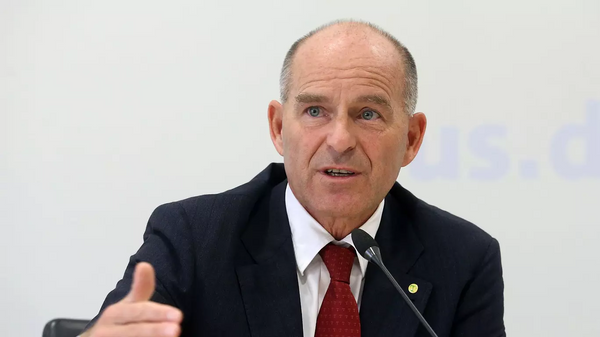

The Annual Status of Education Report (ASER) for rural India notes that there has been a shift in enrolment from private to government schools between 2018 and 2021 across all grades and among both boys and girls. The increase is most striking among children enrolled in the lowest grades. For example, for both girls and boys in classes I and II, enrolment in government schools increased by 9 percentage points and 14.1 percentage points respectively from 2018 to 2021.
Uttar Pradesh and Kerala topped the chart and saw an increase of 13.2 and 11.9 percentage points respectively in enrolment in government schools over those years. Overall, a total of 17 states saw an increase in enrolment in government schools. However, Nagaland and Manipur saw a decrease of 11.4 and 13.4 percentage points in enrolment levels in government schools over the period under review. Interestingly, the shift has not been to private schools, but is reflected in much larger numbers of children who are currently not enrolled in these states—an increase from 1.1% to 15.5% in Manipur and 1.8% to 19.6% in Nagaland from 2018 to 2021. On average in 2021, the proportion of children aged 6-14 currently not enrolled in school has increased by 2.1 percentage points compared to the 2018 level, with states like Andhra Pradesh (7%), Manipur (15.5%), Nagaland (19.6%) and Telangana (11.8%) showing a high increment in their currently-not- enrolled levels compared to 2018.
While it is relatively early to comment on whether rising enrolment levels in government schools will be sustained, these trends offer a chance for the state machinery to ‘seize the moment’ and ensure the retention of students. This can be done by addressing a few key challenges that confront government schools.
The ASER also presented its findings on ‘Learning Levels’ in three states, West Bengal, Chhattisgarh and Karnataka. As per the report, there is a learning crisis in these states and it seems that the situation might not be very different in other states and Union territories. For West Bengal, the report notes that the proportion of children enrolled in Class I in government schools who can read letters of the alphabet or more has decreased by 7 percentage points since 2018 and is now below 2014 levels. The drops are visible in Arithmetic as well, where for Class I, there has been an almost 10 percentage point drop since 2018 in the proportion of children who can recognize single-digit numbers. Similarly, for Chhattisgarh, the report notes that in Class I, the proportion of children who can read letters has decreased by 8.3 percentage points since 2018 and there is a 10 percentage points drop in that of government-school students of Class III who can do subtraction when 2021 levels are compared to 2018. Similarly, the SCHOOL survey by Road Scholarz reported that about half of the children currently enrolled in Classes 3-5 were unable to read more than a few words, and in rural areas, as many as 42% were unable to read a single word.
Therefore, starting this academic year, schools should identify the children who are lagging behind and run basic revision and bridge programmes for them to consolidate their skills of reading, writing, numeracy and comprehension at their own pace. Nipun Bharat, the National Initiative for Proficiency in Reading with Understanding and Numeracy, is a reassuring step in that direction; its focus includes providing access to such modules and retaining children in foundational years of schooling.
The already poor state of school infrastructure might have further deteriorated in the past two years, during which government schools were either closed or used as makeshift wards for the isolation of covid-positive patients (mostly in rural areas). As per data for 2019-20 from the Unified District Information System for Education (UDISE), only 12% of all government schools had internet facilities and only 30% had computers. About 42% of these schools were without furniture, 23% without functional electricity, 49% without hand-rails, 22% without ramps for the physically disabled, and 15% without Wash facilities (which include drinking water, toilets and handwash basins). A revamp of school infrastructure is the need of the hour, with a special focus on information and communication technology, apart from Wash facilities (including covid prevention measures) necessitated by risks of the pandemic.
Pandemic disruptions drew attention to the indispensable role and challenges of teachers, who were offering educational and non-educational support to school students across India. Even before the outbreak, our educational landscape was mired in a range of challenges, especially related to the recruitment and management of teachers, inadequacy of teacher training and a teacher shortage.
It has been recurrently reported that India faces an acute scarcity of teachers in government schools. This gap needs to be filled just to maintain the stipulated pupil-teacher ratio in these schools. Some recent studies have questioned the very premise of a ‘reported’ teacher shortage in the country and argued that there is, in fact, a teacher surplus (for example, Geeta Kingdon and Sandip Datta’s The Myth and Reality of Teacher Shortage in India: An Investigation using UDISE 2019-20 Data). In the light of increased enrolments, as seen in ASER data, it is pertinent to undertake a closer examination of the issue and assess whether our present teacher availability matches the enrolment numbers.
It is still a little too early to celebrate the rising enrolments in government schools. With schools progressively re-opening, including privately run ones, we could see a resumption of the private-school preference that had prevailed in earlier times. This could reverse the current enrolment trend. Yet, this is indeed a window of opportunity for state-run education.
The shift to government schools in a time of crisis offers a clear indication of people’s expectations of the state’s role in providing education as a matter of right and not just another ‘service’. What’s needed now is a greater effort on the part of all governments in charge of education—at the state and central levels—to not just retain increased enrolments, but also to improve the perceptions of various stakeholders (especially parents and children) vis-a-vis state-run schooling systems in India. This can best be achieved by addressing some key gaps in the government school ecosystem, and then making concerted efforts to change the discourse on the faltering performance of government schools in India. At present, we are still a long way off.
Aditya Narayan Rai & Pooja Pandey are, respectively, an associate fellow and a research fellow with the education team at Vidhi Centre for Legal Policy.






